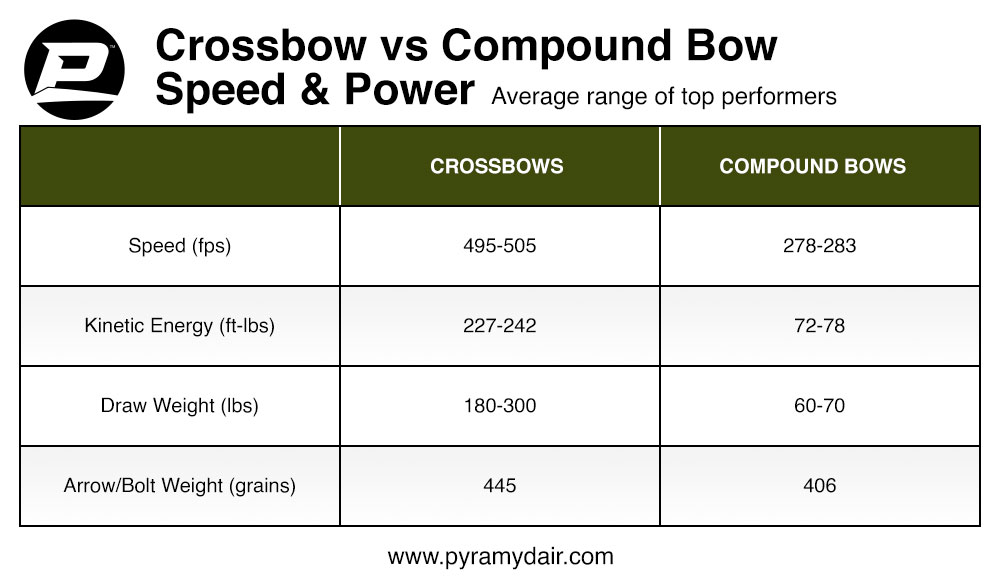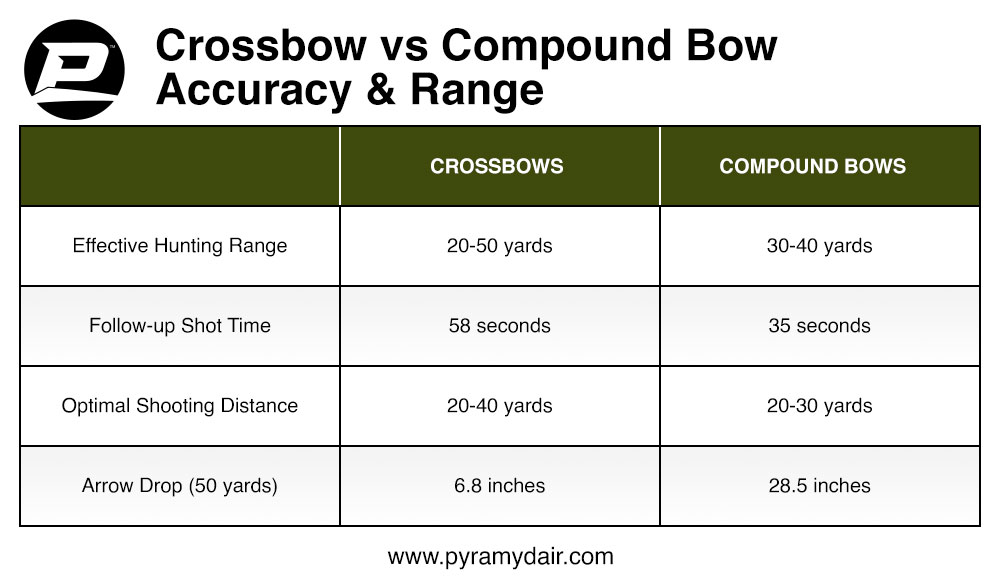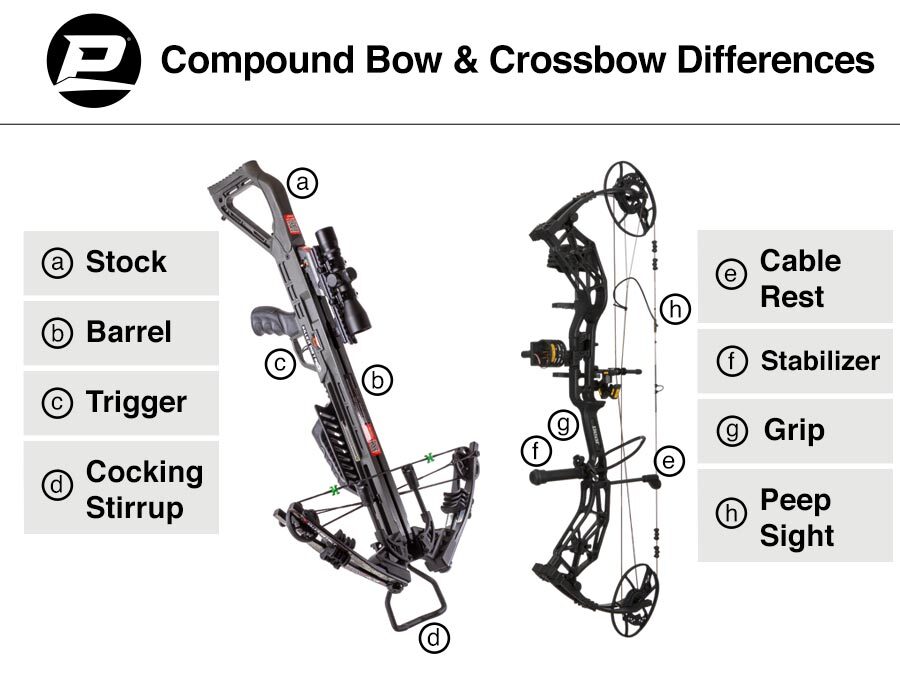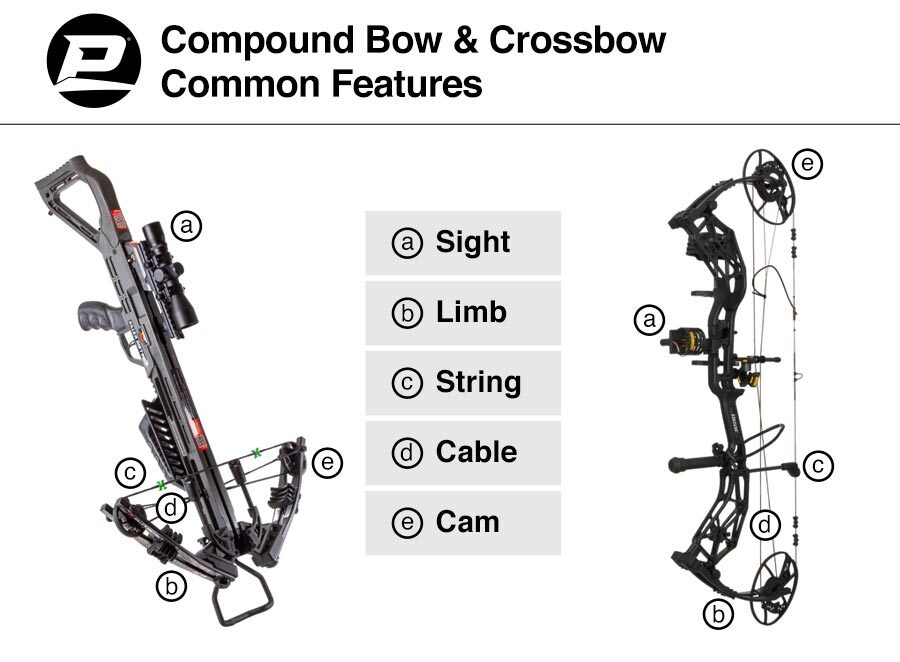Crossbows vs Compound Bows
The longstanding debate of crossbow vs compound bow rages on. Each platform provides distinct advantages in the field. Both have been pushed to the pinnacle of performance through modern engineering: crossbows with their power and compound bows with their stealth.
These two devices are different ways of obtaining the same goal: delivering arrows efficiently and ethically. While crossbows harness massive draw weights and mechanical advantage to generate power, compound bows rely on refined cam systems and skill to achieve their purpose. Each system presents unique characteristics that influence their practical application in both hunting and target shooting.
The choice between these platforms extends beyond mere performance metrics, touching on aspects of hunting style, physical capabilities, and personal preference. Understanding each system's distinct advantages and limitations helps archers make informed decisions about which platform best suits their needs.
"Selecting a compound or crossbow is a personal choice and preference that each archer needs to make individually. While there are differences, the main focus should be finding a setup you enjoy and having fun shooting."
Benefits of Crossbows & Compound Bows
Crossbow vs Compound Bow Performance
Speed & Power
Crossbows outperform compound bows in terms of raw speed and power. Modern crossbows can achieve speeds up to 505 fps, while top compound bows typically reach around 283 fps. This speed advantage translates into higher kinetic energy, with top crossbows generating about 242 foot-pounds compared to 78 foot-pounds for compound bows.

Accuracy & Range
While crossbows have a slight edge in accuracy due to their extra speed providing a flatter trajectory, the difference is negligible in the field. Crossbows have an effective hunting range of about 20-50 yards, while compound bows typically operate effectively between 30-40 yards.

Compound Bow Basics
The compound bow combines elegant design with mechanical advantage to create a hunting and target tool that's both powerful and refined.
Advantages
Compound bows offer several advantages, making them popular for hunting and target shooting. They have a lower stored energy compared to crossbows. The reduced force on the strings, cables, and limbs results in less wear and tear, meaning fewer replacements and maintenance intervals. This design allows archers to take significantly more shots before requiring service or part replacements.
The lighter construction of compound bows, even fully equipped, makes them easier to use in the field. When not in use, they stay relaxed, which helps preserve the bow's structural integrity during hunting or range sessions.
Compound bows are much quieter than crossbows. It has a reduced energy conversion during release, which makes it produce less noise overall. It also sounds quieter to the shooter because it's held at arm's length. This quieter operation is more of an advantage in hunting than target shooting. Additionally, they offer better opportunities for follow-up shots.
Compound bows are extremely customizable. There are so many accessory options that the setup can be configured in a myriad of ways, from a basic sight and release to a setup with a multi-pin sight, stabilizers, dampeners, peep sight, kisser button, and release.
Compound bows are more widely accepted for hunting. While crossbows often face additional restrictions or bans, compound bows can be used in all states.
Drawbacks of Compound Bows
Despite its many advantages, the compound bow has several notable drawbacks. For instance, mastering a compound bow demands a significant commitment to practice time. Unlike easier-to-use tools, achieving proficiency requires consistent training to develop proper form, muscle memory, and accuracy.
The sophisticated design can introduce several potential maintenance problems, such as shifting sight alignment, cam timing changes, cable wear, and loose parts. It's recommended to regularly check your equipment for these issues and fix them.
Here are some hunting considerations:
- Lower projectile speeds lead to pronounced arrow drop, making precise distance estimation crucial
- Shooter must carefully account for trajectory differences over varying distances
- Hunters must time their shots perfectly with the appearance of game
- Practice multiple shooting positions to increase accuracy in different hunting scenarios
- Blind interiors should easily accommodate the movement it takes to shoot the bow in multiple directions
- Practice quick target acquisition and shooting within a limited timeframe
Crossbow Basics
Crossbows are a mixture of ancient and modern technology that bridge the gap between archery and firearms. They make archery hunting more accessible to more people.
Advantages
One of the best advantages of crossbows is their accessibility to new users. The familiar rifle-like design makes them intuitive for those with firearm experience, while the pre-loaded nature eliminates the need for holding weight at full draw. This design particularly benefits hunters with physical limitations or injuries that might prevent them from using traditional archery equipment. The learning curve is notably shorter than with compound bows, allowing new users to achieve proficiency more quickly.
Crossbows are always ready when carried in the field. This readiness makes getting off a quick shot when game appears achievable, as well as eliminating muscle fatigue, unlike compound bows that need to be drawn immediately before firing. Crossbows allow hunters to fire more controlled and opportunistic shots.
The heart of the crossbow is its stock, featuring a precision rail system that guides the bolt toward the target. Modern designs incorporate advanced materials like carbon fiber and aircraft-grade aluminum, creating lightweight and incredibly rigid platforms. Unlike traditional crossbows, contemporary models use compound limb systems and reverse-draw technologies. These innovations dramatically improve efficiency while reducing the overall width of the weapon, making it more maneuverable in the field.
Crossbows feature sophisticated trigger systems that rival high-end firearms in terms of precision and safety. These mechanisms work in concert with anti-dry-fire devices and other safety features to prevent accidental discharge and equipment damage.
Tactical Advantages:
- Greater effective ethical shooting range
- Increased penetration power
- Better pass-through capability
- Ability to penetrate bone when properly equipped
- Improved blood trail opportunities
- More consistent accuracy with less training
- Better stability during aim
- Less movement required for shot preparation
- Reduced chance of spooking the animal with sudden movements
Drawbacks of Crossbows
Crossbows have several drawbacks that affect their practical use in the field. The weight and bulk are the most immediate limitations, making them more cumbersome than other hunting weapons. This extra mass, combined with their front-heavy design, makes maintaining steady aim more challenging without a rest and can be particularly taxing during long hunting sessions when shooting off-hand. The bulky nature of crossbows also creates difficulties when maneuvering through tight spaces or dense brush.
The significant power output of crossbows comes with durability tradeoffs, such as a higher likelihood of limb cracking due to intense force. They also need more frequent string and cable replacements from the extended tension of remaining cocked for long periods. It is often more cost-effective to replace components than to repair them.
The loaded nature of crossbows during hunting requires heightened awareness and safety protocols. The cocking effort that is required and the time-consuming reload process reduces the chance for follow-up shots. Crossbow users will typically only have one shot for each game opportunity presented.
These drawbacks highlight the need for careful consideration when choosing between crossbows and other archery options.
Setup & Details Comparison


Common Questions
Should I Use a Compound Bow or Crossbow for Deer Hunting?
Ultimately, the best bow for deer hunting depends on your physical capabilities, hunting style, and willingness to invest time in mastering your equipment. If you value ease of use and fast learning, a crossbow might be right for you. If you prioritize stealth and are willing to invest time in mastering technique, a compound bow might be a better choice.
Both compound bows and crossbows require accurate shot placement to a deer's vital organs for a quick, ethical kill. However, crossbows produce substantially more kinetic energy, resulting in shorter travel distances after the hit for harvested deer compared to compound bows. High-end compound bows tend to be made with better materials and craftsmanship than even premium crossbows.
Compound bows are significantly quieter than crossbows, allowing for potential follow-up shots. Crossbows are louder, which can spook nearby game. While noise dampeners can be added to crossbows, they will not be as quiet as compound bows due to their mechanical nature.
Crossbows are generally easier to learn and use, particularly for those with firearm experience. Compound bows require more initial training to master but often lead to better long-term proficiency and faster follow-up shots. Crossbows also require more frequent string replacements and overall maintenance.
Crossbow vs Compound Bow Broadheads
The distinction between crossbow and compound bow broadheads primarily relates to their diameter and flight characteristics. This difference is rooted in the fundamental physics of arrow flight and stabilization.
Crossbow broadheads are generally narrower, designed for higher speeds, have enhanced aerodynamic properties, and are optimized for shorter arrow shafts. The shorter shafts and higher speeds reduce the capability of the fletchings to stabilize broader cutting diameters during flight.
Compound bows can use larger cutting diameter broadheads, have better fletching stabilization, and are more flexible with design options.
These distinctions highlight the need to use appropriate broadheads for each weapon system to ensure optimal accuracy and performance.
Crossbow vs Compound Bow Cost Comparison
The archery world has some unique cost dynamics between crossbows and compound bows. While high-end versions of each platform have hefty price tags, there are also affordable versions of each that provide accessibility to many. The long-term ownership expenses also differ.
Packages & Accessories
While crossbows often have higher initial price tags, they generally come as complete packages, including scopes, cocking aids, and bolts. Compound bows usually come alone, requiring the accessories to be purchased separately. However, a few bows come packaged with some accessories, such as sight, quiver, and arrows.
Maintenance Costs
Compound bows require periodic string replacements every 1-3 years, costing between $100-150. While more expensive initially, crossbows often need less frequent accessory upgrades but command higher maintenance costs, with string replacements ranging from $175-200. Pyramyd carries a variety of bow and crossbow strings to keep your equipment ready for the next hunt.





